Six graduates from Design Academy Eindhoven designing for the post-internet age
The internet is affecting the way we interact with the world around us, from the news we read to how we perceive fashion and beauty, as these six Design Academy Eindhoven graduates demonstrate.
At Dutch Design Week numerous graduates showcased projects focused on the post-internet, a term that refers to the widespread impact that the internet is having on everyday life and culture.
Augmented reality (AR) and virtual reality (VR) technologies have already been adopted by major brands such as IKEA, which released its Place app last year, allowing users to preview products in a home setting. Facebook founder Mark Zuckerberg has also said that the growth of augmented reality will make most of the hardware we use today obsolete.
Design Academy Eindhoven graduates used these technologies to create digital experiences, from participating in a violent protest, to exploring a digital city filled with buildings made out of data.
Design reporter Gunseli Yalcinkaya explores six of these projects:
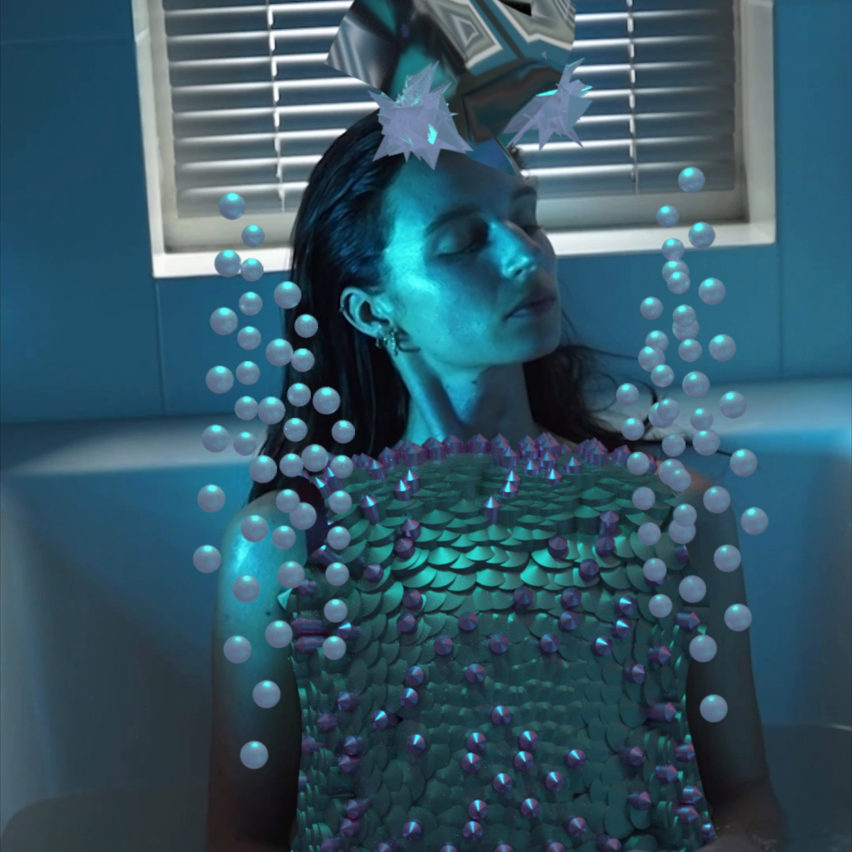
Hyperstition by Clara Escalera
This conceptual project by Clara Escalera explores the future of fashion. Escalera speculates that in future, people will be able to manipulate their body and overall image using AR lenses.
"When we take a look at today's Snapchat filters, we can see how they are being used to communicate emotions, alter one's image and transform one's identity," she said.
"As technology progresses, this digital layer will go beyond cute cat ears and kawaii eyes in our selfies. Extending beyond faces, this technology will manipulate the body, and the overall image we show in public every day, viewable to others through AR lenses."
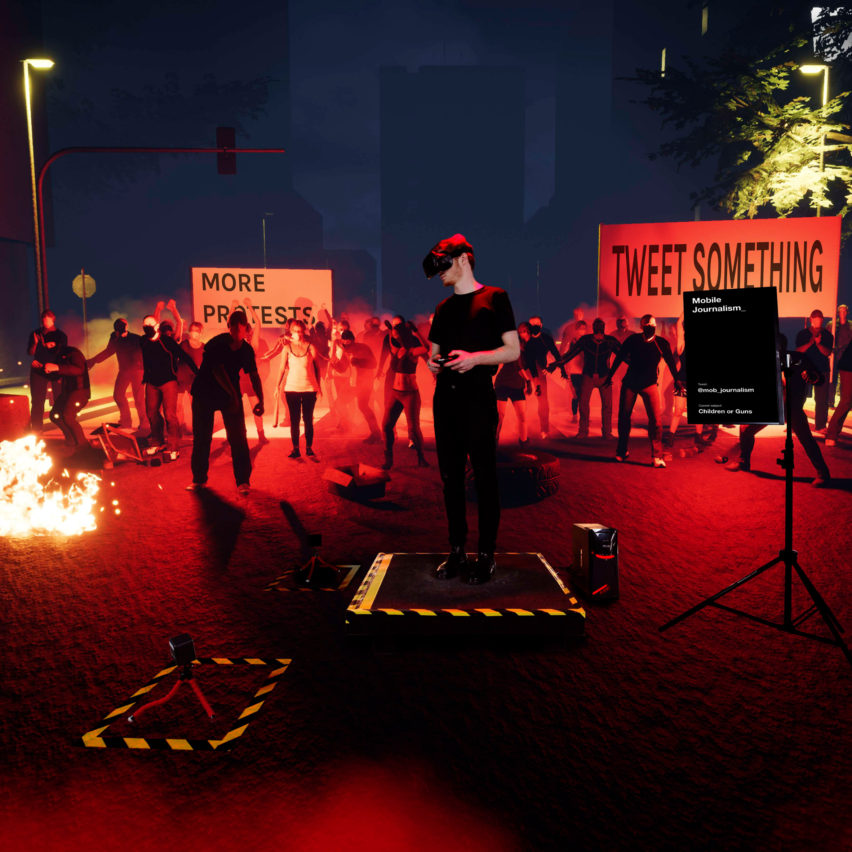
Mobile Journalism by Jim Brady
Jim Brady created a VR experience that depicts a protest event where visitors are able to change their point of view between riot police, protesters and the media.
Users are invited to tweet a hashtag to @mob_journalism, which determines the topic of the protest, projected onto placards in the simulation.
"In this age of information, we are quick to form an opinion based on what's published. But there is more than one version to the stories we hear," said Brady.
"By exploring the scene through multiple perspectives it is possible to discover the different views while attending such an event."
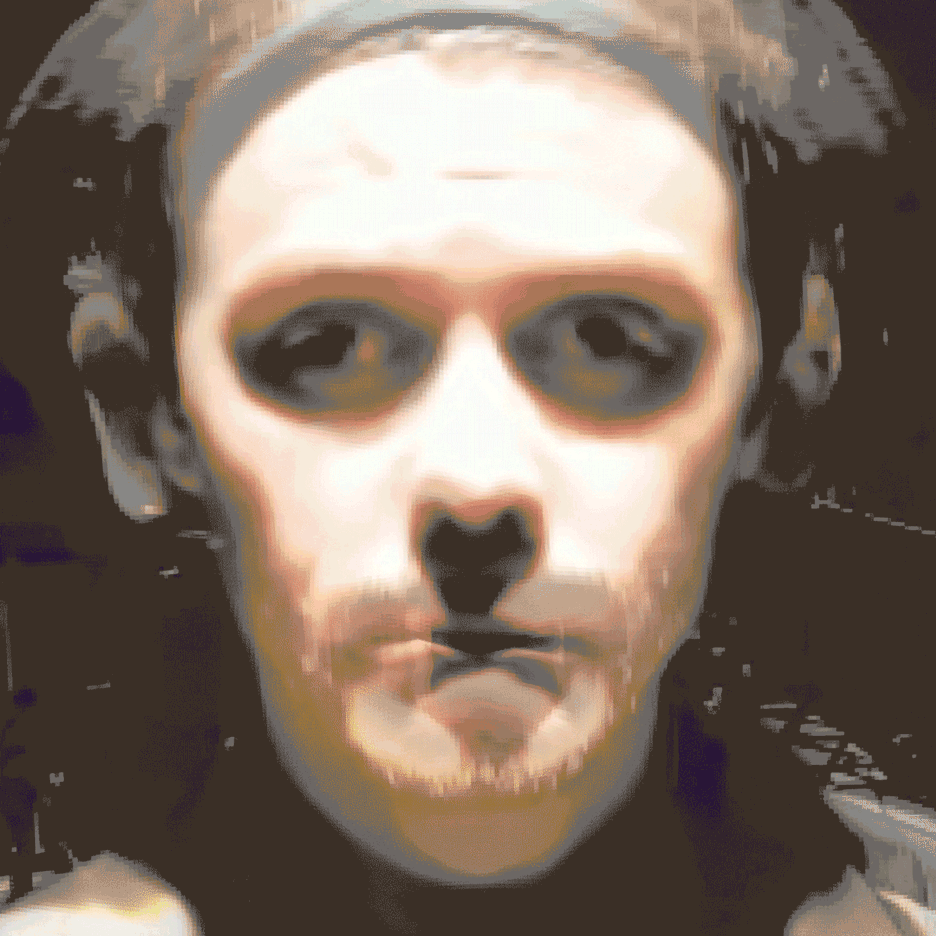
Facing Average by Joep Truijen
This installation by Joep Truijen consists of a computer, a screen and a webcam, which takes photographs of visitors to generate a composite image of their average face. This is done by layering each photograph on top of one another.
"The project encourages us to reflect on our assumptions about other people," said Truijen.
"Confronting us with the average face provokes a conversation between us and the screen about the similarities and differences between people everywhere," he explained.
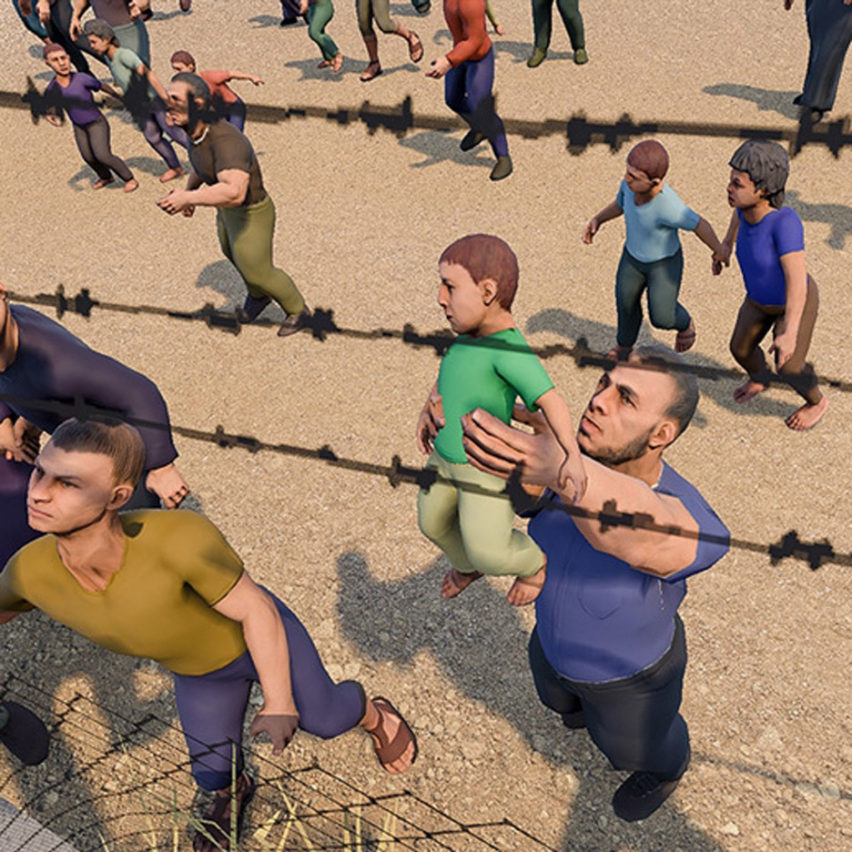
After Photography by Donghwan Kam
Donghwan Kam created video-game-like renderings of memorable moments of contemporary mass media, such as rescue boats arriving at the Sicilian harbour of Trapani with refugees. His aim was to create the experience of a "gamified refugee crisis".
"The image of the refugee boat is so familiar to us and at the same time so objectified," he said.
"Because of the repetitive nature of the images, we are no longer responsive to the actual events. By bringing the images into the realm of virtual experience, I defamiliarise the press photos," he explained.
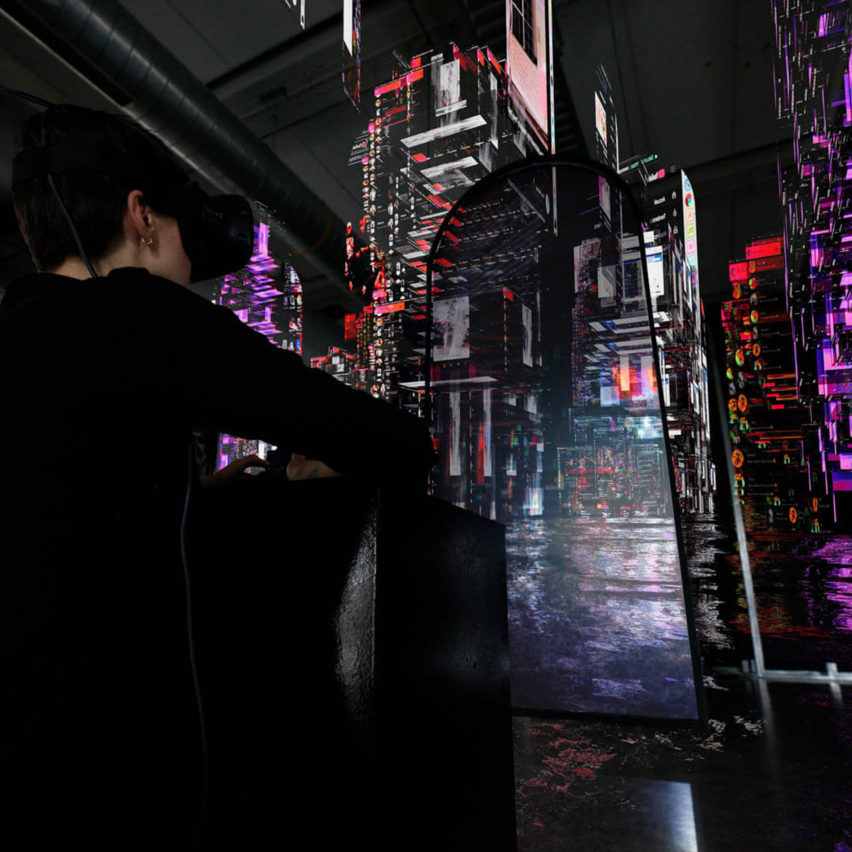
Vito Boeckx created a VR experience that uses the locations of local Wi-Fi points in Eindhoven to create a "digital city", which visitors can explore by putting on virtual reality glasses.
"Screen recordings from nearby modems are turned into huge neon-lit skyscrapers, emphasising the scale of it all; each tower grows when online activity intensifies," explained the designer.
"We all contribute to this omnipresent yet invisible data flow, which increasingly dominates our lives. Is 'data-ism' becoming a new religion? Data Church offers a sanctuary for reflection on our digital behaviour."
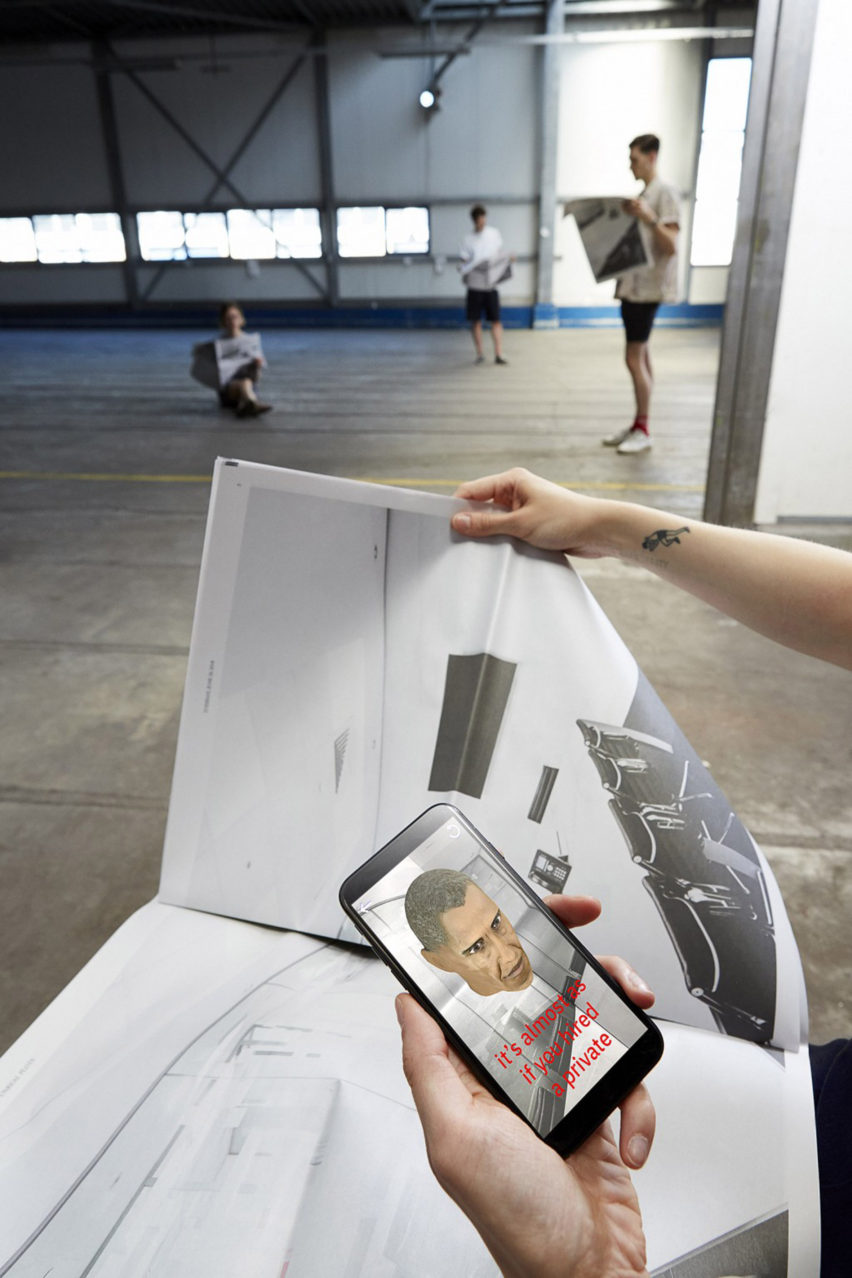
Unreal Plots by Clara Ormieres
Clara Ormieres took recent headlines from world media to create a custom newspaper and app, which allows the user to scan photographs from the articles. An avatar appears on the user's screen that reveals a fictional narrative related to the story.
The project aims to comment on the notion of "fake news" by demonstrating how stories can be manipulated to suit the writer's motives. "Fake news is written on the spot," explained Ormieres.
"Unreal Plots offers a new form of entertainment that uses the principles of conspiracy to turn everyday trivialities into thrilling tales," she continued.
"We all invent stories — temporary realities that we create in our mind when facing uncertainty. This project shows how easily real events can be manipulated and turned into instant fiction via an app."